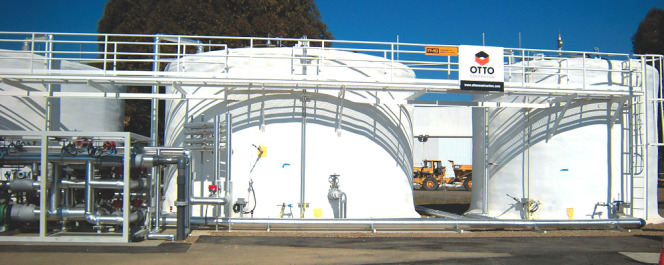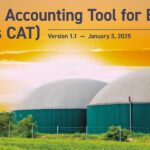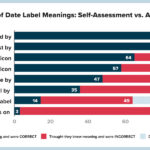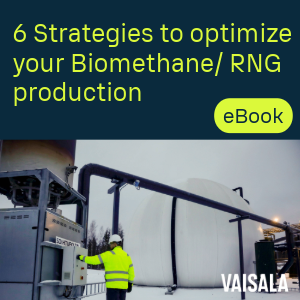Panel discussion provides insights into how to successfully maneuver through California’s stringent requirements for projects such as anaerobic digestion.
Marsha Johnston
BioCycle November 2014

CleanWorld high solids anaerobic digester in Sacramento (CA), located at a solid waste transfer station.
The best strategy to clear all of the environmental permitting hurdles necessary to operate a bioenergy project in California is to develop a strong relationship with the lead regulatory agency and be conversant with every detail of the project, noted a panel of experts on an October webinar sponsored by the American Biogas Council (ABC) and the Bioenergy Association of California. Although the information supplied by the webinar could be applied to projects in most locales, the webinar focused heavily on the fairly stringent requirements in California.
With bioenergy projects, developers must acquire permits primarily for land use, wastewater and storm water, air quality, solid waste and hazardous materials, explained Fred Tornatore, chief technical officer with TSS Consultants, who works with biogas projects in California. Acquiring the multiple permits requires dealing with city or county planning or community development agencies, one of which will have primary permitting authority and becomes the “lead” agency over the others, according to panelist Kristen Catanos, an attorney for Stoel Rives LLP and an expert in requirements for bioenergy projects under the California Environmental Quality Act (CEQA).
“What I’ve garnered over many years of doing this is that you want to develop a regulatory rapport with the land use agencies,” added Tornatore. “They are technical people, but they are not engineers or scientists, so you really have to frame the bioenergy project and its positive social and environmental attributes. They usually have a very positive response, and get really excited about renewable energy, so before filling out the application, have some discussions about what to put in.”
Tornatore spoke primarily about land use permitting, noting that generally, anaerobic digester (AD) projects should be sited in agricultural or industrial zones. “Most dairy digesters have to be located at the source of the feedstock. But if the digester doesn’t have to be, the developer can seek sites that have appropriate zoning.” The broader zoning categories have different grades, such as heavy, light and medium industrial that may or may not include an AD description. Furthermore, explained Tornatore, “permitted uses in various zoning districts can vary widely within and between local jurisdictions.” Even if the code doesn’t seem to include the appropriate description, says Tornatore, talking directly to the planning department can often produce the desired result.
If a project uses water or has effluent, the developer must contact the appropriate local agency, such as the regional wastewater or water quality board. Storm water issues are typically dealt with in the context of a general construction permit and/or industrial operations general permit. “If you build an AD system and have a surface drain, you will need a storm water permit,” he added. “Any time storm water leaves the property, it requires a permit. If it is contained on-site, such as into a storm water pond, and it evaporates, a permit isn’t needed.”
Land use decisions in California include “permitted by right,” which means a developer can begin if building permits are in order; a “zoning review,” in which a planning director or administrator reviews the project before typically granting a permit by right; conditional, aka special use, which requires CEQA process; and not permitted.
Sparking Environmental Review
CEQA was passed in 1970 with the aim to inform the public of potential environmental impacts of projects before they are approved and to incorporate mitigation measures into it to reduce the impact. State and local public agencies in California are entrusted with compliance with CEQA and its provisions. Catanos noted that CEQA “makes no judgment on whether a project should be approved, it just provides information.” However, she added, CEQA is constantly being reinterpreted by the courts, and thus is in flux on how it is supposed to be applied.
Projects subject to CEQA, however, could fall under a statutory exemption determined by the California legislature. For example, AB 1104, passed in September, exempts biogas pipelines from dairy farms in Fresno, Kern, Kings and Tulare counties from CEQA.
If the project is not exempt, the developer must undertake an initial CEQA study to determine if the project will have significant environmental impact and, if so, if there are mitigations that can make the impact less than significant. If an initial study determines that a project has no significant impacts and no mitigation measures are needed, the lead agency can publish a Negative Declaration; if the project needs mitigation measures, it will publish a Mitigated Negative Declaration. These are subject to public comment periods, after which the agency can decide whether to adopt the Negative Declaration and approve the project. An Environmental Impact Report (EIR) is required when there is a significant impact and detailed mitigation measures. Castanos noted that an EIR requires more robust analysis, more public involvement, a longer comment period and, thus, costs more. Typical issues that arise from bioenergy projects, she added, are air quality, including dust, odor and truck emissions, and water quality, such as waste stream discharge or water supply issues.
Aspects of bioenergy projects that could figure into an air quality permit include the type of system (e.g., wet digestion, dry fermentation, landfill gas, composting); the flow and handling of materials; and how the biogas will be used (e.g., compressed into renewable natural gas, or combusted in combined heat and power engines, microturbines, burners, boilers), explained Maria Bowen, environmental scientist at Cornerstone Environmental. The key for successful air permitting lies in providing sufficient detail for equipment processes, she continued. “These projects are new and innovative processes, and the agency is likely not familiar with them, so be patient.” Once the project is permitted, it will have compliance measures, including source testing and monthly reporting, which could impact the placement of monitoring equipment.
In his parting words of advice, Tornatore, who once worked as a regulator, said: “Have patience with the regulatory people. Remember it is a negotiation, not an argument.”
Marsha Johnston is a Contributing Writer to BioCycle.













